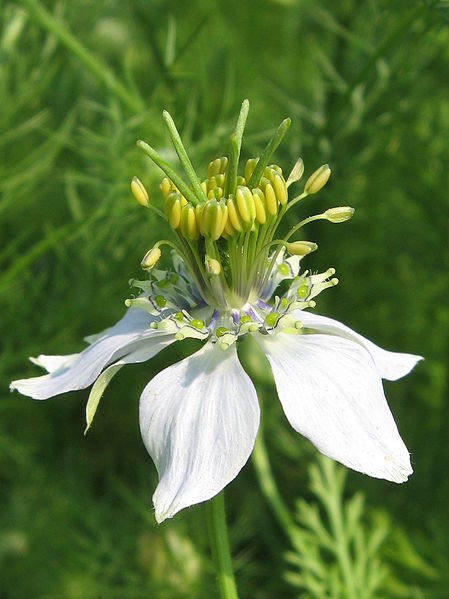Evaluation and Phytochemical Screening of Seed Oil of Nigella Sativa Linn.
Nigella sativa (Ranunculaceae) is a flowering plant, native to Southwest Asia. Seeds contain 36%–38% fixed oils, proteins, alkaloids, saponin and 0.4%–2.5% essential oil. The fixed oil is composed mainly of unsaturated fatty acids, including the unusual C20:2 arachidic and eicosadienoic acids. The seeds are used as a carminative and stimulant to ease bowel and indigestion problems and are given to treat intestinal worms and nerve defects to reduce flatulence, and induce sweating. The present paper deals with preliminary phytochemical screening of fixed oil obtained by the seeds. Also attempt was made to evaluate the oil so as to establish the standardization parameters.
The whole 4 pages article is available for download here.
Nigella sativa (Ranunculaceae) is a flowering plant, native to Southwest Asia commonly known as karayal (H) and blach cumin (E). It is small prostrate herb about 45 cm high 2-3 slender leaves pinnatisect, 2-4 cm long cut into linear segment, segments oblong. Flowers pale, blue on solitary long peduncles, seeds trigonous and black in colour.
The plant has a rather stiff, erect, branching stem, bears deeply-cut greyish-green leaves and terminal greyishblue flowers, followed by odd, toothed seed vessels, filled with small somewhat compressed seeds, usually three-cornered, with two sides flat and one convex, black or brown externally white and oleaginous, strong agreeable aromatic odour, like that of nutmegs, and a spicy, pungent taste. The flowers are delicate, and usually coloured pale blue and white, with 5–10 petal. The fruit is a large and inflated capsule composed of 3–7 united follicles, each containing numerous seeds. It has a pungent bitter taste and a faint smell of strawberries.
The whole 4 pages article is available for download here.

